The decline of the CTN sector has been well documented but some operators are bucking the trend. Rod Addy reports
Five years ago, grocery retailers were predicting the demise of the CTN, yet in The Grocer's latest Top 50 survey, key players in the sector reported significant growth.
So has the sector undergone a revival - or is the writing still on the wall for the CTN?
On the face of, the statistics do not paint a pretty picture. Sales of tobacco and newspapers are falling and the confectionery market reached maturity years ago. Add to this the competition from the major supermarkets and it's no surprise that few retailers want to enter the sector and many have been encouraged to exit.
James Walton, senior economic analyst at IGD, says the decline in CTN numbers looks set to continue. "We will see a reduction in numbers as owners of businesses retire and sell up as well as continued transfers from CTN to full convenience," he says.
His bleak outlook is supported by annual figures from The Knowledge Store. There were 7,787 specialist CTNs in the UK in 2000. But the number has been declining steadily every year and stood at 5,117 last year.
Yet, despite the challenging climate, many newcomers and established retailers dedicated to a CTN offering are doing well.
Rippleglen, for example, posted annual growth last year of 64%, with sales climbing from £71m to £117m, catapulting it from number 12 to number four in The Grocer's Top 50 list. Of course, these figures could be dismissed as the inevitable outcome of the Supercigs and Supernews acquisitions. Rippleglen's chairman, Harry Medcalf, admits its current growth rates will be hard to sustain. But he insists there's more to its success than the purchase of a load of stores. And several other retailers report similar growth, as our case studies show.
Industry experts believe that the fall in CTN numbers in the past few years has given the survivors space to flourish.
"Part of it is to do with store locations," says IGD's Walton, who argues that the number of CTN stores has been reduced to a handful of operators with the best sites. "They are in high streets, railway and bus stations and near schools, exactly where shops selling confectionery, newspapers and tobacco are needed," he says.
These sites offer future growth potential as well, says Walton.
William Gandy, MD of Newcastle-based Finlays, which has grown its estate from three to 20 stores within six months, agrees: "Our shops are in high footfall zones where you can charge shoppers a premium."
Not only do the surviving CTN retailers have their pick of sites now the rest have moved on, but competition from supermarkets has only served to hone their offer, says Walton. "When people think CTN, they often think low quality, but rising stars such as Stars News Shops and TM Retail have learned that shopping begins by appealing to the eye," he says.
He maintains that their efforts to polish up the look of their stores and the appearance of their staff are paying off.
Rippleglen MD Mike Colley says pressure from larger retailers has forced it to sharpen up its act: "Our customers don't want to spend ages waiting in a queue like they do in a forecourt shop or a supermarket. Our theme for 2006 is queue management. We've been working hard on that with PayPoint, for example, installing digital fast lanes in shops with high consumer traffic."
Scott Annan, director of market analyst SRCG, agrees that competition from the multiples has had a positive effect. "Venture capitalists have started to talk to me about investing in CTNs and you know there's been a change in the market when that happens," he says, stressing the continuing potential of traditional CTN products: "People will always want a smoke, a Kit Kat and a Coke. Cigarettes is still the single biggest category in many c-stores."
Annan says US trends indicate the way the UK market will develop. After initially swinging away from tobacco, retailers have come full circle, he says: "It's almost a capital offence to smoke in California, yet BP's AM/PM brand, which operates predominantly in California, achieved double-digit growth in tobacco sales in the past year."
He's convinced that there will always be a proportion of consumers who want to smoke, enabling small specialists who provide a welcoming, professional service to flourish. At the same time, the multiples are moving away from cigarettes as a core focus, he adds.
Tony Wright, MD of Maynews, thinks there are ways of combating the downturn in other categories as well. "We can counter declining newspaper sales by moving into home news delivery, an area the supermarkets won't touch."
His views echo the optimism of many other CTN players who believe that their struggles have only made them stronger and that categories they stock can still prove lucrative for years. Given their performance, there's every chance CTN specialists can continue to make gains in the sector.
'The decline has stopped'
'We're over the worst now'
>>newsplus - MD Neil McCormick Neil McCormick has worked in the CTN sector for years, with previous experience at United Newshops. He is optimistic about the prospects for CTNs. "Over the past 10 years there has undoubtedly been a massive decline in CTN retailing, but I believe that has stopped." He believes that good CTNs can thrive in the face of strong competition from a convenience store chain, even if it is operated by a major supermarket group. "The multiples provide good service, but they are often not as friendly as an independent." Getting the basics, such as availability, right is vital, he says, but beyond that, he says there are ways for independent CTNs to combat the slow growth in confectionery. "It's a mature market, so you have to stick close to manufacturers on product innovation. Go for premium for the margin, while making sure you stock the top sellers and keep the range fresh." There are also ways to maximise margins on tobacco products. "I will charge a premium where I can, but I have moved towards price- marked packs as well to attract shoppers," says McCormick. "In addition, we are looking at products and services to replace tobacco revenue. The National Lottery, for example, is a good footfall protector."
>>maynews - MD Tony Wright Tony Wright believes supermarkets have won the day in some mainstream CTN areas: "The multiple grocers have taken over confectionery." But he's convinced that the CTN sector is still in rude health: "C-stores are struggling more than CTNs. We're over the worst now." He says supplementing traditional CTN sales with added facilities was a wise move: "We offer services such as the lottery, PayPoint and currency exchange facilities. That has brought footfall through our shops. "Years ago we would have used tobacco as a footfall driver. Now I use PayPoint." He adds that the current trend towards home news delivery in the sector is helping to offset declining newspaper sales. Supermarkets pose no threat to the revenues that independent CTNs can make from it, he argues. And in tandem with other retailers, he advocates a premium pricing strategy for tobacco to offset falling value sales: "You can put 5p on some packs of cigarettes and people don't even flinch. "Our tobacco sales are pretty buoyant at the moment. They are 15% up year-on-year, partly because the government is clamping down on tobacco smuggling more effectively."
Five years ago, grocery retailers were predicting the demise of the CTN, yet in The Grocer's latest Top 50 survey, key players in the sector reported significant growth.
So has the sector undergone a revival - or is the writing still on the wall for the CTN?
On the face of, the statistics do not paint a pretty picture. Sales of tobacco and newspapers are falling and the confectionery market reached maturity years ago. Add to this the competition from the major supermarkets and it's no surprise that few retailers want to enter the sector and many have been encouraged to exit.
James Walton, senior economic analyst at IGD, says the decline in CTN numbers looks set to continue. "We will see a reduction in numbers as owners of businesses retire and sell up as well as continued transfers from CTN to full convenience," he says.
His bleak outlook is supported by annual figures from The Knowledge Store. There were 7,787 specialist CTNs in the UK in 2000. But the number has been declining steadily every year and stood at 5,117 last year.
Yet, despite the challenging climate, many newcomers and established retailers dedicated to a CTN offering are doing well.
Rippleglen, for example, posted annual growth last year of 64%, with sales climbing from £71m to £117m, catapulting it from number 12 to number four in The Grocer's Top 50 list. Of course, these figures could be dismissed as the inevitable outcome of the Supercigs and Supernews acquisitions. Rippleglen's chairman, Harry Medcalf, admits its current growth rates will be hard to sustain. But he insists there's more to its success than the purchase of a load of stores. And several other retailers report similar growth, as our case studies show.
Industry experts believe that the fall in CTN numbers in the past few years has given the survivors space to flourish.
"Part of it is to do with store locations," says IGD's Walton, who argues that the number of CTN stores has been reduced to a handful of operators with the best sites. "They are in high streets, railway and bus stations and near schools, exactly where shops selling confectionery, newspapers and tobacco are needed," he says.
These sites offer future growth potential as well, says Walton.
William Gandy, MD of Newcastle-based Finlays, which has grown its estate from three to 20 stores within six months, agrees: "Our shops are in high footfall zones where you can charge shoppers a premium."
Not only do the surviving CTN retailers have their pick of sites now the rest have moved on, but competition from supermarkets has only served to hone their offer, says Walton. "When people think CTN, they often think low quality, but rising stars such as Stars News Shops and TM Retail have learned that shopping begins by appealing to the eye," he says.
He maintains that their efforts to polish up the look of their stores and the appearance of their staff are paying off.
Rippleglen MD Mike Colley says pressure from larger retailers has forced it to sharpen up its act: "Our customers don't want to spend ages waiting in a queue like they do in a forecourt shop or a supermarket. Our theme for 2006 is queue management. We've been working hard on that with PayPoint, for example, installing digital fast lanes in shops with high consumer traffic."
Scott Annan, director of market analyst SRCG, agrees that competition from the multiples has had a positive effect. "Venture capitalists have started to talk to me about investing in CTNs and you know there's been a change in the market when that happens," he says, stressing the continuing potential of traditional CTN products: "People will always want a smoke, a Kit Kat and a Coke. Cigarettes is still the single biggest category in many c-stores."
Annan says US trends indicate the way the UK market will develop. After initially swinging away from tobacco, retailers have come full circle, he says: "It's almost a capital offence to smoke in California, yet BP's AM/PM brand, which operates predominantly in California, achieved double-digit growth in tobacco sales in the past year."
He's convinced that there will always be a proportion of consumers who want to smoke, enabling small specialists who provide a welcoming, professional service to flourish. At the same time, the multiples are moving away from cigarettes as a core focus, he adds.
Tony Wright, MD of Maynews, thinks there are ways of combating the downturn in other categories as well. "We can counter declining newspaper sales by moving into home news delivery, an area the supermarkets won't touch."
His views echo the optimism of many other CTN players who believe that their struggles have only made them stronger and that categories they stock can still prove lucrative for years. Given their performance, there's every chance CTN specialists can continue to make gains in the sector.
'The decline has stopped'
'We're over the worst now'

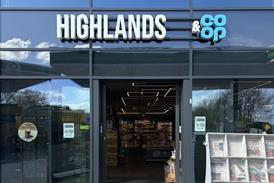

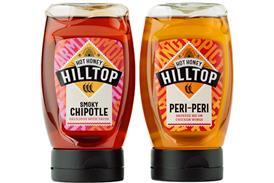
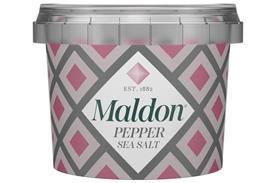




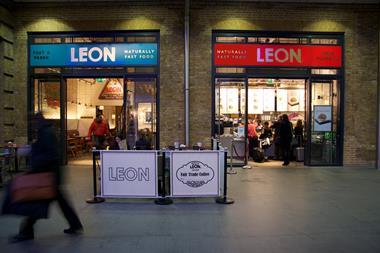



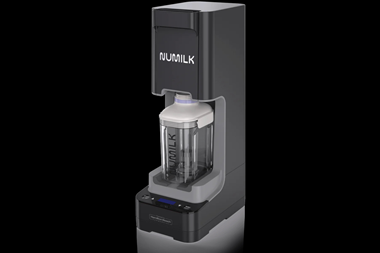
No comments yet